NAPA VALLEY, Calif. — In 1970, Napa County faced a profound setback as half of its precious winegrape crop fell victim to a relentless 28-day onslaught of devastating frost. This unprecedented cold snap etched its name in history as the longest and most destructive ever recorded in the county. The year 1970 was marked by more than just a devastating frost, however. That year Agricultural Commissioner Aldo Delfino noted that 1,200 acres of prune orchards were being replaced by winegrapes. An additional 500 acres of open space also was being planted in vines.
Over the last century, Napa Valley has undergone a significant transformation. It has evolved from being a rural agricultural community farming a diversity of crops into a county dominated by winegrape cultivation. This shift has not been without its challenges. Although winegrapes are now more valuable than the prunes, walnuts and livestock that were farmed here years ago, there have been periods when these other crops were more lucrative. Even winegrapes have seen challenging periods, such as the two-decade span from 1920 to 1940, influenced by Prohibition and the Great Depression, when per-ton prices for winegrapes actually declined. Even more recently, during the economically challenging years of the early 2000s, the growth of winegrape prices slowed considerably, likely influenced by the dot-com bubble and the Great Recession. To understand these shifts, a review of 101 years' worth of agricultural reports is necessary.

In this article, I’m going to look at the first five years of the reports, between 1921 and 1926, because those include Ag Commissioner W.D. Butler’s comments about the growing season. Then I examine each decade from 1930 through 2010 as well as the 2022 report. All of these ag reports are available online.
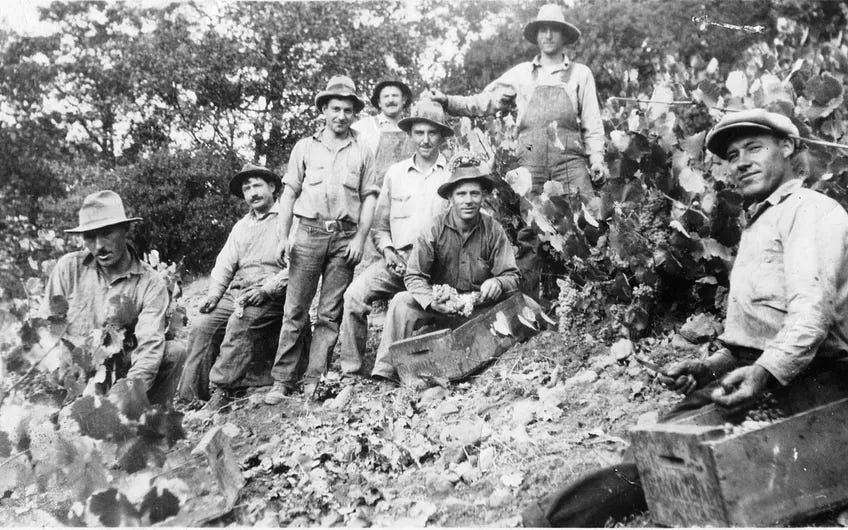
Takeaways
For years, winegrapes and prunes were the top two crops in the Napa Valley.
Prunes were more valuable than winegrapes for 14 consecutive years, beginning in 1930.
1924 was the first year during Prohibition that the county’s entire grape crop was shipped to Bay Area and Eastern markets.
1933 was the first time the crop report listed all the crops grown and animal products sold. Beef, wool, dairy products, hay, poultry and eggs were worth $1.2 million that year.
In 1940, animal products were worth $2.24 million, winegrapes worth $560,000.
In 1960, prunes and winegrapes were worth roughly the same, $2.2 million.
In 2015, the reports were available in Spanish for the first time.
In 2022, all crops and animal products were worth $894.2 million, winegrapes were worth $890.9 million.
1920s: Prunes and vineyards shape early Napa
In 1921, Butler submitted a handwritten crop report for the county, detailing that 600 carloads of grapes were shipped, mostly to Eastern markets. This was the beginning of Prohibition, which made it illegal to manufacture, transport or sell alcohol, although families were allowed to make their own wine. Prohibition lasted from 1920 until 1933.
Total tonnage was 8,500 tons, and 1,500 tons were crushed locally. The report notes that total production was one-fourth of normal, average price was $80 per ton and the crop was worth in excess of $750,000. Additionally, Butler wrote, “The quality of the grapes was excellent this year. Weather conditions were favorable and mold and rot were in evidence to only a slight extent. The high prices have stimulated production and the prospects are good for perhaps a thousand additional acres this coming planting season.”
That first report didn’t mention any other crops besides winegrapes, but the following year detailed both the winegrapes — 30,000 tons, worth $1.75 million — and the other crops that totaled more than 11,400 tons. They were:
Prunes: 8,000 tons, $1.25 million
Pears: 1,850 tons, $130,000
Cherries: 750 tons, $120,000
Apples: 600 tons, $40,000
Plums: 280 tons, $12,000
Dried cherries: 18 tons, $6,000
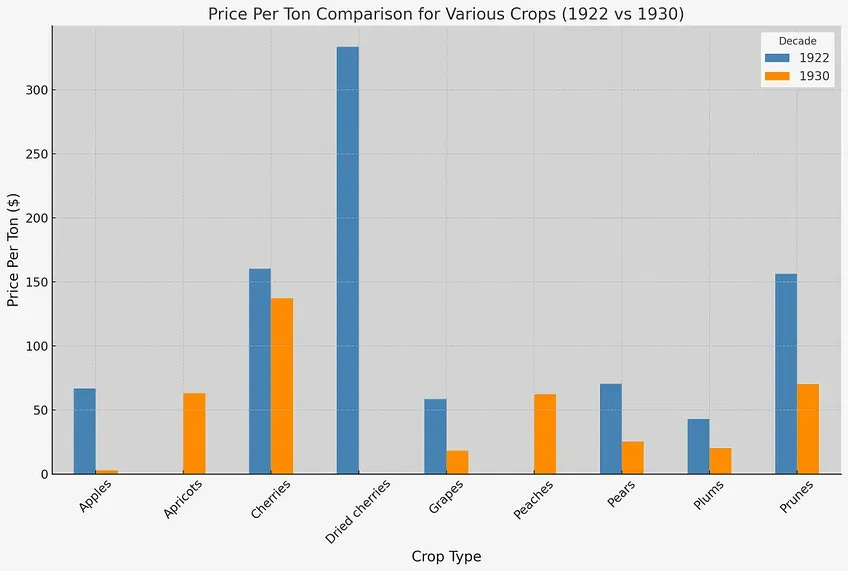
Grapes and prunes
For a long time grapes and prunes were the top two field crops listed in the reports, although for 14 years, from 1930 through 1944, prunes were more valuable per ton than winegrapes, even though more tons of winegrapes were crushed than prunes harvested.
In 1922, Butler wrote, “The grape crop was of good quality and would have brought into the county nearly twice the amount realized ($1.75 million) had it not been for the October rains and the transportation situation.” Sixteen thousand tons of winegrapes were shipped by rail out of state in 843 carloads. He added: “Of these, 567 were refrigerators, 242 box cars and 34 Express cars. To have moved the crop satisfactorily would have taken three times the amount of refrigerators furnished.” Butler estimated an additional 4,000 tons were shipped by truck. Locally, 8,000 tons of grapes were crushed, and 2,000 tons or 7% of the crop were spoiled on the vines by rain.
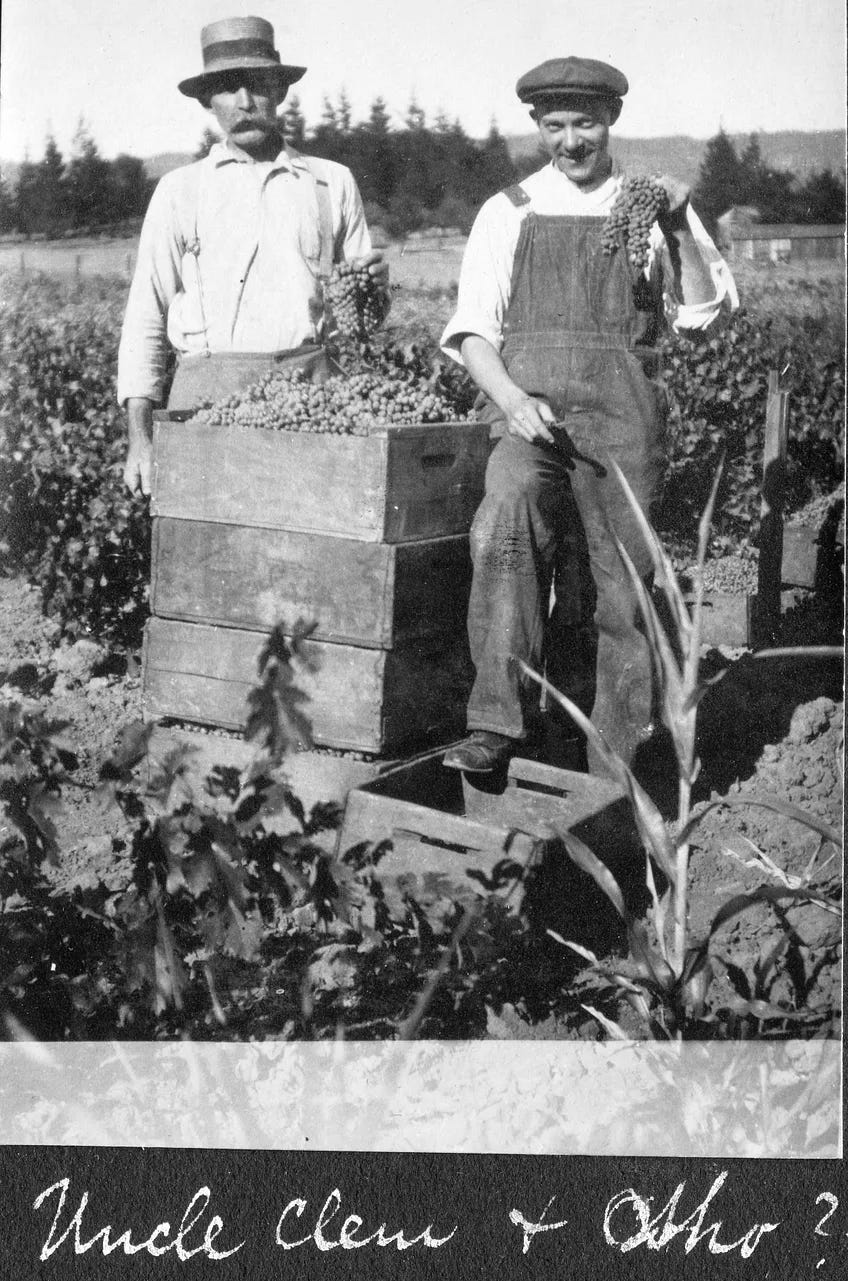
Other crops included cherries, dried cherries, plums, pears and apples. The top two crops, both by volume and value, were grapes — 30,000 tons, worth $1.75 million — and prunes — 8,000 tons, worth $1.25 million. Total value of all crops, $3.3 million.
Even though farmers were able to sell their grapes or juice during Prohibition, they were sent mostly by rail to the Eastern markets or to the Bay Area. Prohibition set the wine industry back decades. In 1920 there were 713 bonded California wineries. By 1933 the vast majority were out of business. They were victims of both Prohibition and the Great Depression, which started with a stock market crash in 1929 and only ended with America’s entry into World War II following Japan’s attack on Pearl Harbor in December 1941.
In the following year, 1923, Butler noted that tonnage was normal except for prunes, which were 50% of a normal crop. “Prices for all products were considerably lower than 1922, with the exception of cherries, which were almost as good. There seemed to be no market at all for canning plums, of which varieties the Napa crop consists. Of a possible plum tonnage of 500 tons on the trees, only 50 tons were harvested, the balance being a loss.”
Again, the top two crops were:
Grapes: 25,250 tons, valued at $1.120 million
Prunes: 6,600 tons, worth $725,000
TOTAL: $2.225 million
In 1924, Butler wrote, “In comparison with the last two years, the net values are favorable.” Total value was $2.686 million. “Apples and cherries were the poorest crops, both in tonnage and returns, being about 40% of normal. It is of interest to note that with a 50% grape crop, we moved as many tons (17,750 tons) and received slightly more money ($1.3 million) than ever before. This is the first season that the entire grape crop of the county has been shipped.” Prunes harvested: 8,750 tons, worth $1.05 million. The rainfall year of 1923-24 was one of drought, with only 13.59 inches of rain falling between July 1, 1923, to June 30, 1924. The following year, 42.38 inches of rain fell in St. Helena, according to records kept by Ed Paulson.
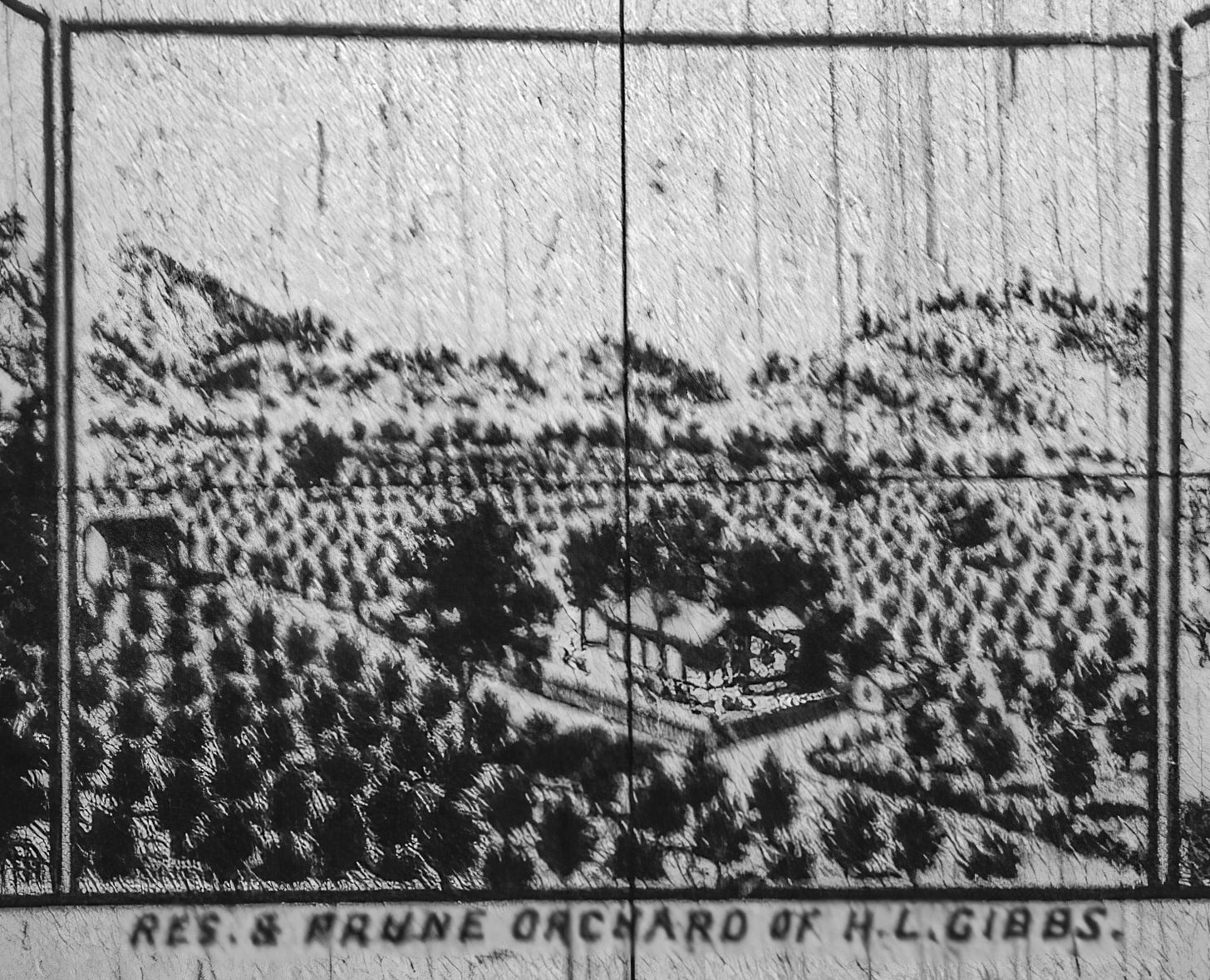
“Unfavorable weather conditions are responsible for the drop in tonnage,” Butler wrote in 1925. “The initial setting of all fruits was subnormal, and a wet spring and cool summer made a very poor growing season.” The cherry crop was a total failure, and dry rot destroyed approximately 50% of the zinfandel.
Grapes: 21,000 tons, $1.26 million
Prunes: 7,600 tons, $836,000
TOTAL: $2.39 million
In 1926 the one-page report listed the crops grown. In alphabetical order, they included apples, apricots, cherries, grapes, pears, peaches, plums for canning, prunes, persimmons, tomatoes and walnuts. Tonnage ranged from 40 for dried apricots (worth $16,000) to 23,000 tons of winegrapes shipped in 1,641 cars worth $920,000. Cherries for canning, sent to the East and for local use, were worth $285,500. The top two crops were grapes and prunes.
Grapes: 23,000 tons, $920,000
Prunes: 8,000 tons, $800,00
TOTAL: $2.421 million

In 1930, the total value of all crops grown was $1.78 million, with prunes leading the way: 15,250 tons harvested, worth $1.067 million. Nineteen tons of grapes were shipped by rail and by truck, worth $342,000. The report listed apples (shipping, local, dried and byproducts), apricots (green and dry), cherries (shipping, canning and local), pears (shipping to Napa, Calistoga and Berryessa, canning and dried), prunes, plums, peaches (green and dry), tomatoes (1,800 tons, worth $27,000) and walnuts. What a diversity of crops, and for the first time prunes were worth three times as much as winegrapes.
The value of Napa County’s crops dropped to $904,425 in 1932, with prunes worth $591,000 and grapes worth $136,500. Under the category for grapes and pears, it was noted that 2,000 tons of winegrapes were unharvested as well as 1,500 tons of pears. Tons of cherries and apples were also left on the tree.
In 1933, at the height of the Depression, 24.9% of the total workforce of 12.8 million people were unemployed. Butler noted the value of all the fruit crops was $1.81 million, double the year before, with 12,100 tons of prunes worth $1.089 million. Although 15,000 tons of winegrapes were crushed, their value was $480,000.
For the first time in 1933 Butler tallied up the value of all the other agricultural products in the report, worth $1.2 million. Beef, veal, hogs and lambs were worth $257,000; wool, 208,000 pounds, worth $42,000; dairy products, milk and cream, worth $300,000; and poultry, eggs, meat and turkeys, worth $472,000. He noted that 10,000 tons of hay were worth $80,000 and 5,000 tons of other grains were worth $112,000.
TOTAL: $3.081 million.
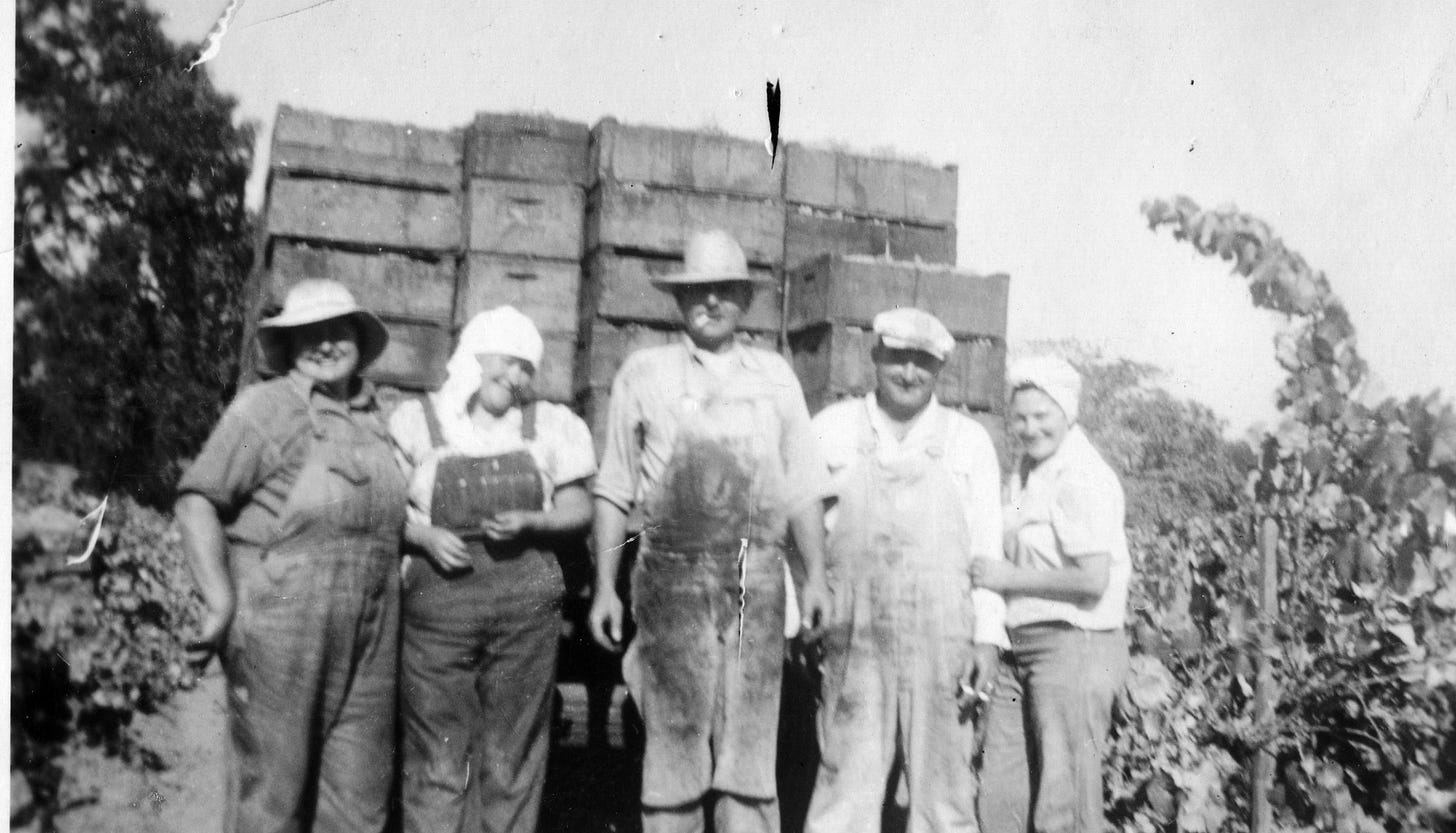
By 1940, with the Great Depression nearly over and war clouds looming overhead (Britain declared war on Germany in September 1939), the total value of all of the crops was $4.03 million, a 4.3% increase greater than 1939.
Animal production was $2.24 million, fruit and nut crops were $1.43 million, and field crops were $354,500. Dried and off-grade prunes (9,125 tons) were worth $581,750, and Butler reported 32,000 tons of crushed grapes were worth $560,000. Field crops, worth $354,500, included harvests of tomatoes, hay, wheat, oats, barley and others.
The value of all the crops reached nearly $11 million in 1943 and was nearly $13 million in 1945, the year World War II ended.
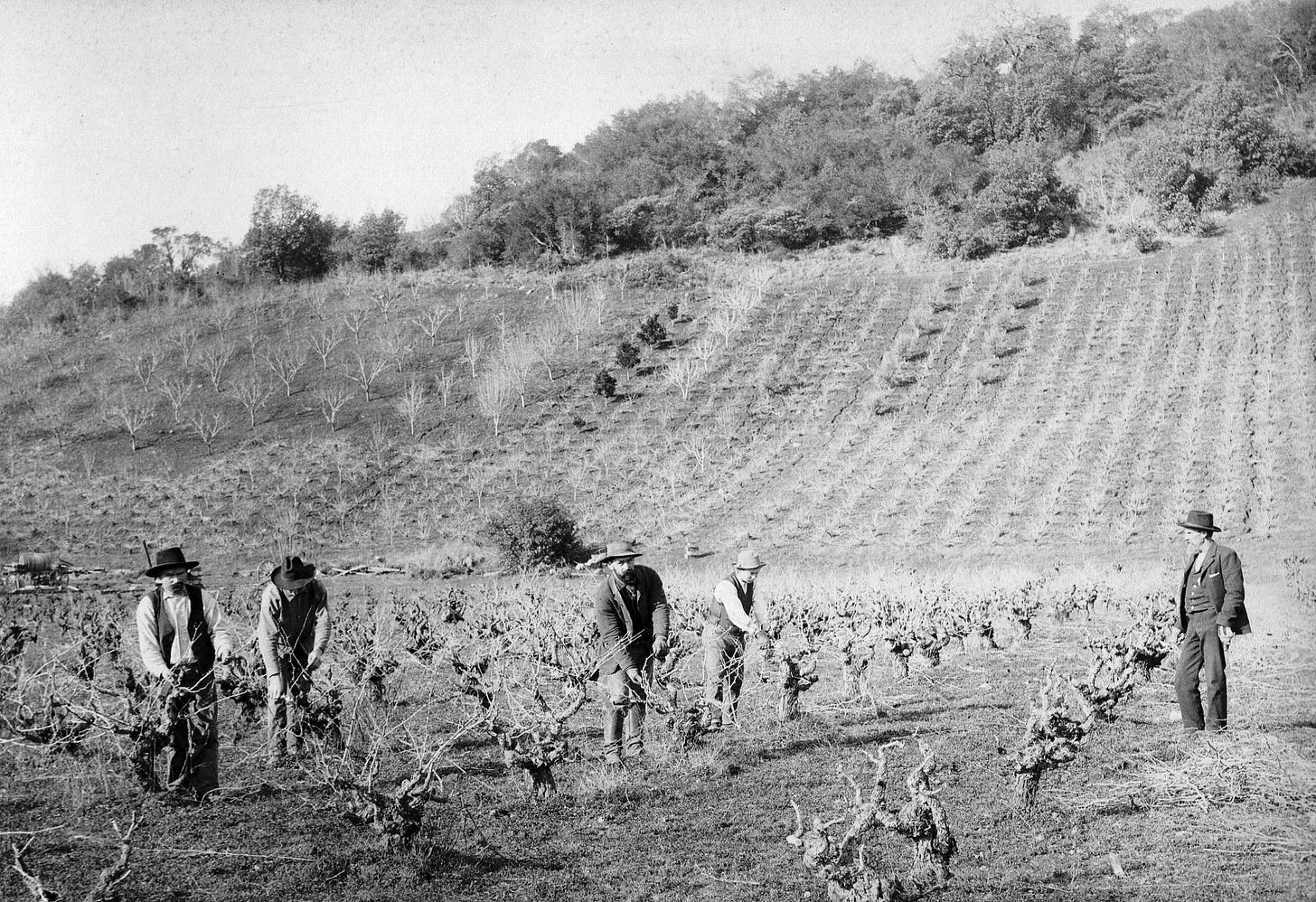
1950s: Napa’s agricultural mosaic — livestock, prunes and winegrapes
In 1950, total value was $13.17 million, with animal production valued at $6.8 million, fruit and nut crops valued at $5.2 million, and field and truck crops valued at $1.14 million. Some 7,500 head of beef were worth $2.13 million, while milk and cream were valued at $1.6 million and eggs at $2.4 million.
More than 10,000 tons of prunes were worth $2.486 million; 24,000 tons of winegrapes were worth just over $2 million.
1960s: Prunes, beef and winegrapes — Napa’s agricultural balance
Total animal production in 1960 was valued at $12.2 million with 20,500 head of beef leading the way at $4.7 million. Market milk was worth $1.57 million, and 72,000 cases of eggs were worth $872,000. Fruit and nut crops were worth $5.09 million with prunes and grapes roughly equal at $2.2 million. There were 9,600 acres of winegrape vineyards planted in the county and 7,651 acres of plum trees for prunes.
In 1964, Aldo Delfino was the county’s ag commissioner.
1970s: Transition from livestock and prunes to predominant winegrapes
It was the changing of the guard in Napa County in 1970. Delfino wrote that beef production ($7.11 million) barely edged winegrape production ($7.1 million) as the leading agricultural crop for the year. “Twenty-eight consecutive days of damaging frost during a six weeks (sic) period, the longest recorded siege of frost in Napa County history, seriously affected wine grape production for 1970.” He estimated that half of the winegrape crop was lost.
His report also mentions that winegrape acreage continued to increase substantially. In that year 1,200 acres of prune orchards were removed and all scheduled to be replanted to grapes. Additionally, 1,090 acres of vineyards were planted in 1970; 500 acres were new vineyards. He predicted: “The future of winegrape production in Napa County will continue to look bright in the years ahead as per capita consumption of good table wines continue to increase.”
The grand total was $25.2 million. On the nearly 7,600 acres of vineyards in Napa County, an amazing 29 varieties of winegrapes were grown, although cabernet sauvignon led with 1,568 acres. Petite sirah was second, with 1,378 acres, while zinfandel was grown on 857 acres.
For white wine grapes, chenin blanc was grown on 672 acres, while French colombard was grown on 685 acres.
1980s: Higher prices for winegrapes in Napa’s agriculture
Ag Commissioner Steve Bardessono reported a total value of $66.9 million for all crops and livestock in 1980. There was an increase of $9.3 million for winegrapes (total of $49.8 million) over the prior year. In the county, there were more than 22,200 acres of vines, with an average yield of 3.82 tons per acre. The total crop of walnuts was worth $458,000 with the 88 acres of orchards for prunes worth $37,200.
Bardessono wrote, “The winegrape increase can be attributed primarily to a 10% increase in production and higher prices paid for some varieties due to exceptional quality.” The harvest for chardonnay was some 9,000 tons with a price per ton of about $1,100. Some 8,000 tons of chenin blanc were harvested; price per ton was $596. For black winegrapes, the harvest for cabernet sauvignon was $16,800 tons with a price of $615 per ton.
1990s: Winegrape ascendancy in Napa Valley
Another decade went by, and in 1990 winegrapes continued to be the most planted crop and worth so much more than anything else compiled for the annual crop report. Bardessono, who remained the ag commissioner, reported a total of $147.25 million for all crops, a decrease of $13.7 million from the year before. He said it was primarily due to a decrease in winegrape production.
Totals were:
Fruit and nut crops: $140.8 million
Livestock and poultry: $2.24 million
Field crops: $1.04 million
Livestock and poultry products: $925,000
Vegetable crops: $300,000
The price paid for a ton of cabernet sauvignon grapes was $1,606, merlot was $1,553 and cabernet franc was $1,465. The report listed more than 1,300 acres of cabernet sauvignon, and the harvest was 21,600 tons. The harvest for chardonnay (37,800 tons) and sauvignon blanc (10,200 tons) were the two largest for white-wine grapes. Prices paid ranged from $245 per ton (gray riesling) to $1,506 per ton for chardonnay.
2000s: Winegrape prices skyrocket
Ag Commissioner David R. Whitmer noted that the 50% increase ($343.9 million) for all crops for 2000 compared to 1999 was “primarily due to an increase in average prices paid for winegrapes.” Total value for the winegrape crop (33,436 tons, up 32%) was up 52% or an increase of $115.6 million. The total value for both white and black winegrapes was $337.5 million.
For 2000, the 45.3 tons of walnuts was worth $42,000, not quite half of what it was ($71,000) in 1999. In 2000, there were only 171 acres of trees planted. Miscellaneous fruits and nuts, including apples and prunes, accounted for $49,000.
Livestock totaled $1.92 million with most of it for cattle and calves. Other than fruits and nuts, including winegrapes, the summary for 2000 was as follows:
Floral and nursery crops, $3.25 million
Livestock, $1.92 million
Field crops, $662,000
Livestock and poultry products, $320,000
Vegetable crops, $228,000
2010s: Reflecting on Napa’s agrarian shifts
Whitmer reported for the year 2010 that there was a gross value of $461.4 million for all ag products, down 8.1% from the prior year. The value of the winegrape crop fell, as did the overall production from 2009.
Total winegrape crop was $453.8 million, with black winegrapes responsible for $365.3 million. Other totals from 2010 included:
Livestock, $3.08 million
Floral and nursery, $2.46 million
Poultry and other, $742,000
Vegetable crops, $323,360
Field crops, $145,529

100 years later
More than 100 years later, compare the 1921 report to the latest crop report from 2022. Today Napa County is a monoculture, with winegrapes being the crop most grown and the most valuable. Tracy Cleveland, Napa County’s agricultural commissioner/sealer, reports the total value of all agricultural production was $894.2 million. The gross value of winegrapes was $890.9 million, an increase of $194.1 million over 2021. “This increase in production was primarily due to an 8.8% increase in total winegrape production and a 10.4% increase in the average price paid for all Napa County winegrape varieties compared to the previous year,” she writes.
Floral and nursery crops; vegetable and field crops; and livestock, poultry and other animal products accounted for the remaining $3.3 million. Compared to values in 2021, vegetable crops doubled, for a value of $384,400, and field crops were up 28% for a value of $374,000. The rest declined. Floral and nursery crops lost 43% ($120,800) compared to the prior year, livestock was down 17% ($1.491 million), and poultry and other animal products declined by 53%, with a value of $576,000.
In 2022, the average price per ton for red winegrapes was $7,707, while for whites it was $3,323 per ton. Adjusted for inflation, the $80 average price per ton in 1921 was equivalent to an estimated $1,223 in 2023. Total tonnage for both red and white winegrapes for 2022 was 131,144 tons.
Napa Valley’s agricultural history is characterized by constant change. From the early dominance of prunes and livestock to the current focus on winegrapes, particularly cabernet sauvignon, the region has continuously adapted to market and environmental shifts. The high prices for cabernet sauvignon today provide a snapshot of the current market, but they don’t guarantee future stability or dominance. Agricultural trends are inherently dynamic, and Napa Valley is no exception. As conditions and consumer preferences evolve, so, too, might the leading crops and their market values, underlining the need for adaptability and foresight in the region’s agricultural planning.
If today's story captured your interest, explore these related articles:
Dave Stoneberg is an editor and journalist who has worked for newspapers in both Lake and Napa counties.


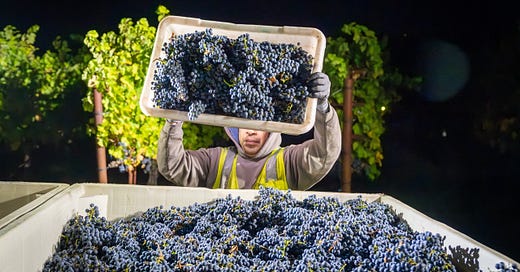



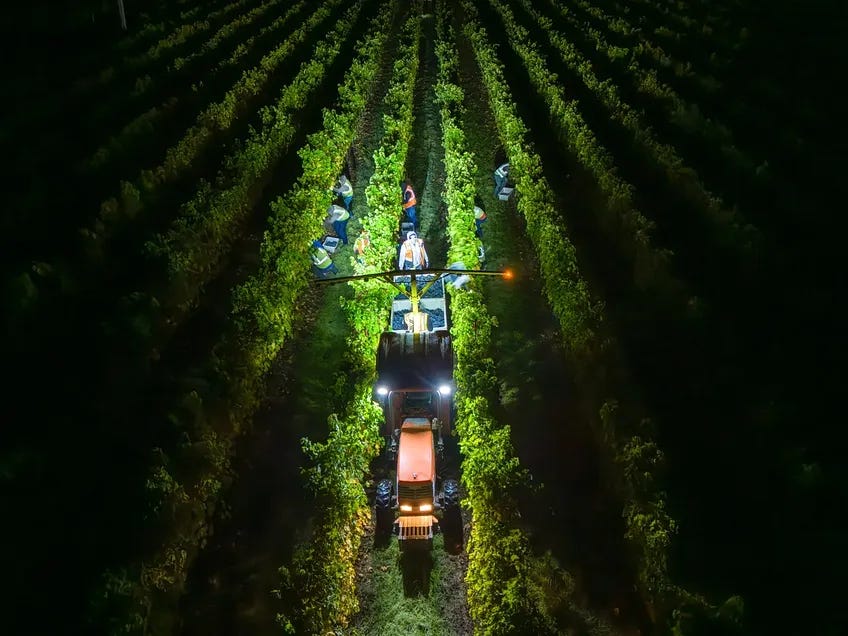
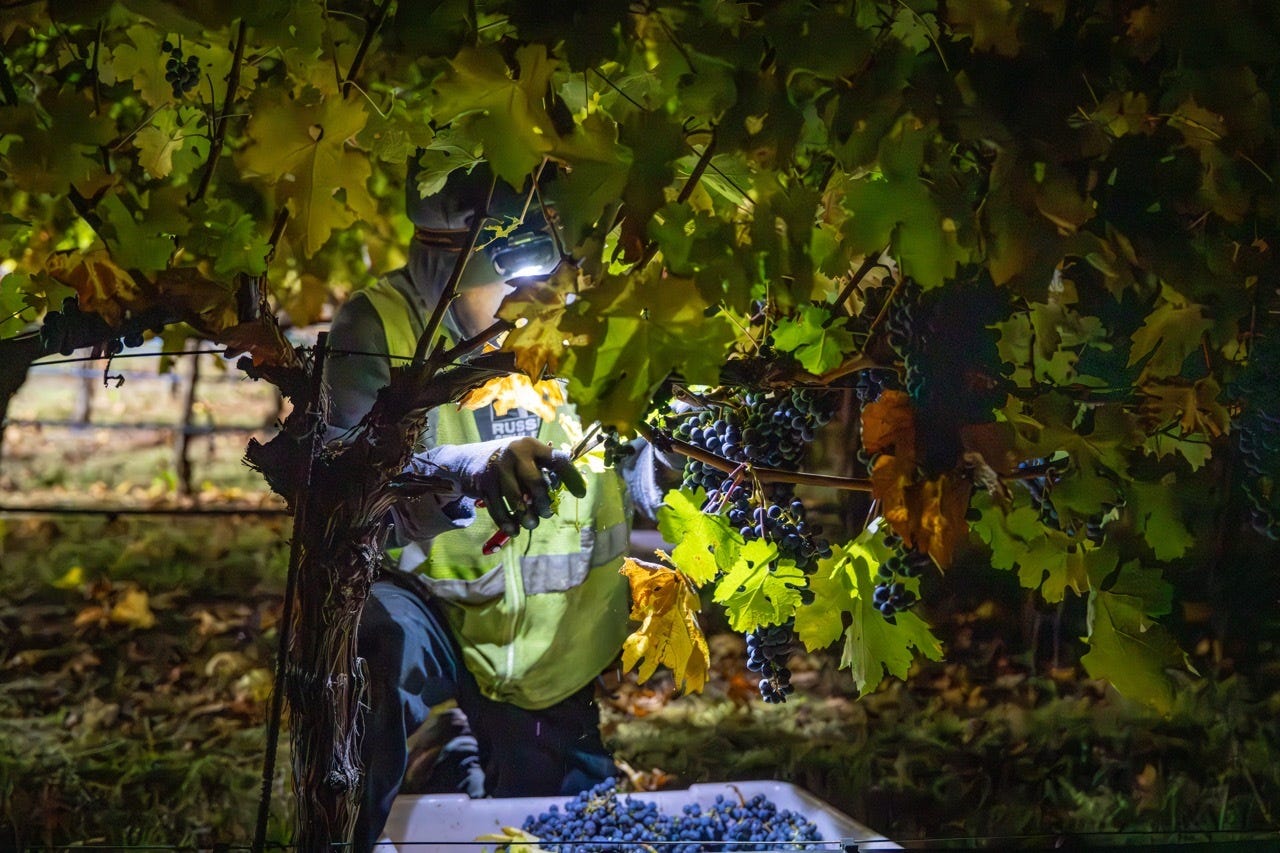
Thank you for this comprehensive analysis.
Some of my most precious childhood memories include the time spent on my Grandfather’s Bale Lane ranch picking prunes and swimming in the Napa River.